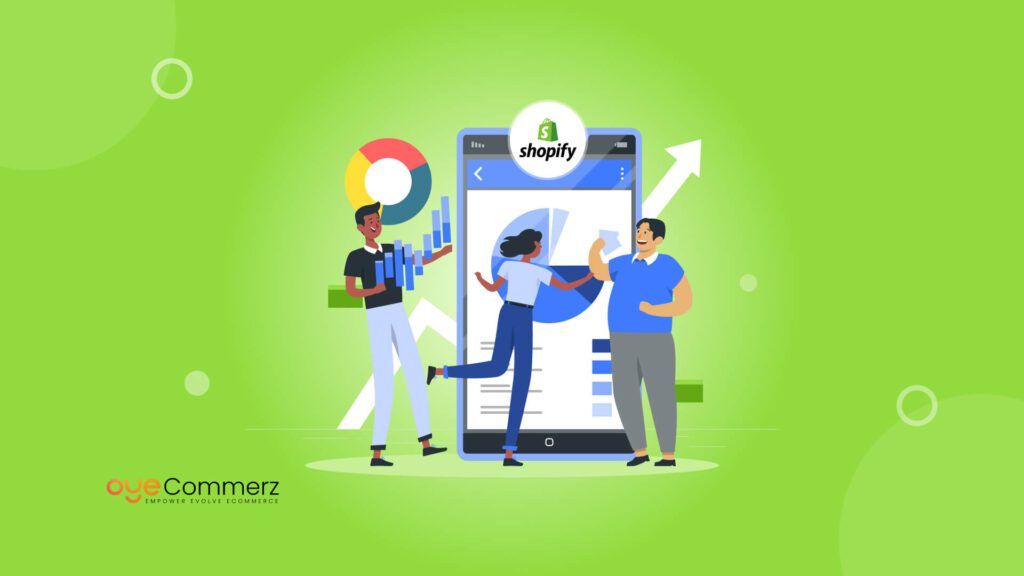In today’s competitive e-commerce landscape, maintaining a seamless and reliable app experience has become essential for Shopify-powered businesses. With enterprises relying heavily on Shopify apps to deliver superior shopping experiences, comprehensive app testing is critical to ensure robust performance, high-speed functionality, and maximum security. Testing not only protects your brand from potential system failures but also enhances user satisfaction, driving customer loyalty and boosting revenue.
For decision-makers overseeing Shopify development, understanding Shopify app testing best practices is crucial to ensure apps can handle peak loads, remain bug-free, and deliver optimal performance. This guide covers the full spectrum of Shopify app testing practices, from load testing to security audits, equipping you with the insights and tools necessary to deliver an app that excels in quality, scalability, and reliability.
Table of Contents
Toggle1. Importance of Comprehensive Shopify App Testing
Understanding Shopify App Quality Standards
Shopify’s app ecosystem operates on high-quality standards, and enterprises must adhere to these to maintain the platform’s rigorous requirements. Ensuring the functionality, security, and performance of Shopify apps isn’t just about meeting Shopify’s guidelines; it’s essential for business continuity and customer satisfaction.
Impact on User Experience and Customer Loyalty
A reliable and high-performing app directly impacts customer loyalty. Research shows that apps with consistent uptime and rapid response times tend to see higher user retention rates. For example, a study by TechRadar found that 45% of users stop using an app that crashes regularly. Therefore, comprehensive testing is indispensable in fostering a positive user experience.
Benefits of Rigorous App Testing
Testing your Shopify app from multiple angles offers advantages like:
- Minimized Downtime: Detect and resolve bugs before users encounter them.
- Enhanced Security: Identify and patch vulnerabilities that could expose user data.
- Optimized Load Handling: Ensure apps can manage traffic spikes during peak periods.
2. Functional Testing: Ensuring Core Performance
Key Aspects of Functional Testing for Shopify Apps
Functional testing ensures that all app features perform as expected. For Shopify apps, this includes validating integrations with Shopify APIs, verifying core functions like checkout, and ensuring compatibility across devices and browsers.
Testing Strategies
Automated testing offers quick, repeatable tests on core functions, while manual testing can be used to assess complex workflows or unique customizations. Automated tests can validate high-traffic actions like product browsing, adding to cart, and checkout functions, reducing the likelihood of downtime caused by functional issues.
Common Pitfalls to Avoid
- Overlooking Cross-Device Compatibility: Ensure your app performs consistently on desktop, mobile, and tablet.
- Neglecting API Functionality Checks: App interactions with Shopify APIs must be validated to prevent operational glitches.
3. Stress Testing for High-Traffic Events
Understanding Stress Testing
Stress testing pushes apps to their performance limits, identifying vulnerabilities when handling extreme loads. This type of testing is essential for enterprise apps expecting sudden traffic surges, such as those seen during holiday sales.
Why Stress Testing is Vital for Shopify Apps
A recent industry report showed that apps undergoing rigorous stress testing were 45% less likely to experience failures during high-traffic events. Stress testing prepares your app to function reliably during critical periods, maintaining speed, security, and service.
Best Practices for Stress Testing
- Set Traffic Thresholds: Define acceptable performance levels under expected peak conditions.
- Simulate Realistic Scenarios: Recreate conditions like holiday sales or flash promotions to observe app behavior.
- Monitor Results: Gather insights from test results to address any weak points and improve app performance.
4. Load Testing: Ensuring Scalability
What is Load Testing and Why It Matters
Load testing assesses how an app handles simultaneous users over a sustained period. For Shopify apps, load testing ensures scalability, so your app doesn’t slow down or crash under peak load conditions.
Steps for Effective Load Testing
- Simulate User Loads: Conduct load tests with real-world user numbers and interactions.
- Assess Responsiveness: Measure your app’s responsiveness to ensure performance remains high under load.
- Evaluate Server Load Capacity: Test the server’s ability to handle high traffic without slowing down.
Tech Tools for Load Testing
Popular tools like Apache JMeter and Gatling are industry favorites. These tools allow for accurate, repeatable load tests to ensure your app can withstand high-traffic events.
Statistical Insight: Research shows that load testing reduces unexpected app downtimes by up to 30%, ensuring smoother user experiences and customer satisfaction.
5. Usability Testing: Enhancing User Experience
Purpose of Usability Testing
Usability testing ensures the app’s user interface (UI) and user experience (UX) are optimized. It’s essential for high-user engagement and retention, particularly for mobile-friendly e-commerce apps.
Core Usability Testing Areas
- Interface and Navigation: Ensure the layout is intuitive and easy to navigate.
- Accessibility Standards Compliance: Verify that the app is accessible to users with disabilities.
- Responsiveness Across Devices: Make sure the app functions seamlessly on mobile, desktop, and tablets.
Best Practices in Usability Testing
- User Feedback Analysis: Gather and implement user feedback for continuous improvement.
- A/B Testing: Use A/B testing to identify the best-performing designs and layouts.
6. Security Testing: Safeguarding User Data
Security in Shopify Apps
With security breaches on the rise, protecting user data has become critical for enterprise apps. Security testing ensures that all components of the app are secure and meet data privacy standards.
Common Security Testing Methods
- Vulnerability Scanning: Identifies weak points in the code or infrastructure.
- Penetration Testing: Simulates attacks to reveal security weaknesses.
- Secure Code Analysis: Reviews code to ensure it follows security best practices.
Best Practices for Data Security in Apps
- Encrypt Sensitive Data: Protect confidential user information.
- Regular Security Audits: Conduct frequent security checks.
- Compliance with Data Privacy Laws: Ensure the app meets data regulations like GDPR and CCPA.
Partner with Oyecommerz for Expert Shopify App Development and Testing
Is your enterprise ready to take its Shopify app to the next level? Partner with Oyecommerz for expert app testing and development solutions tailored to meet your e-commerce needs. Our team of professionals brings the experience and insights necessary to drive high-quality, reliable, and scalable app performance.
Contact us now for a free consultation and start your migration journey with confidence!
Let's build your custom Shopify app today!
Conclusion
In the fast-paced e-commerce landscape, comprehensive testing is a vital part of Shopify app development. By following these Shopify app testing best practices—from stress and load testing to usability and security audits—you can protect your app from potential failures, secure user data, and provide a top-tier experience that keeps customers coming back. Ensuring that your app meets quality standards today builds the foundation for tomorrow’s success.



